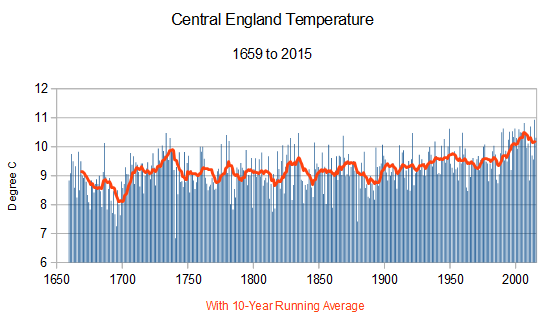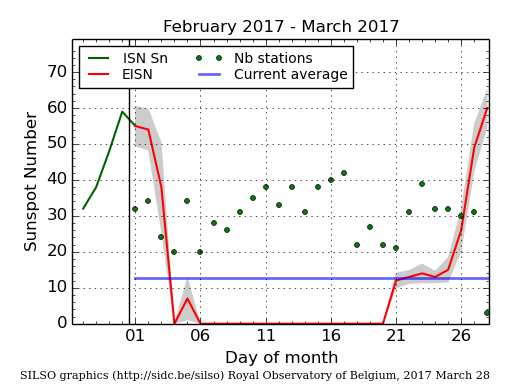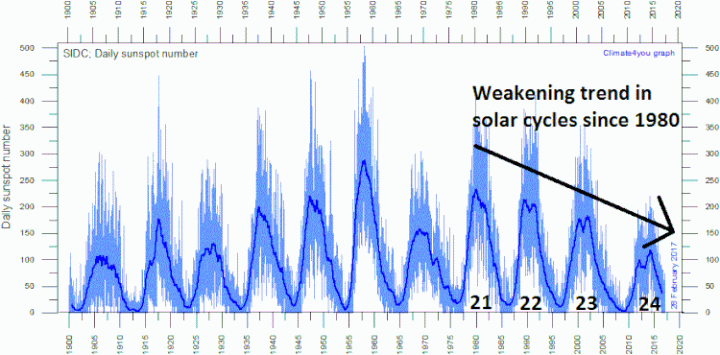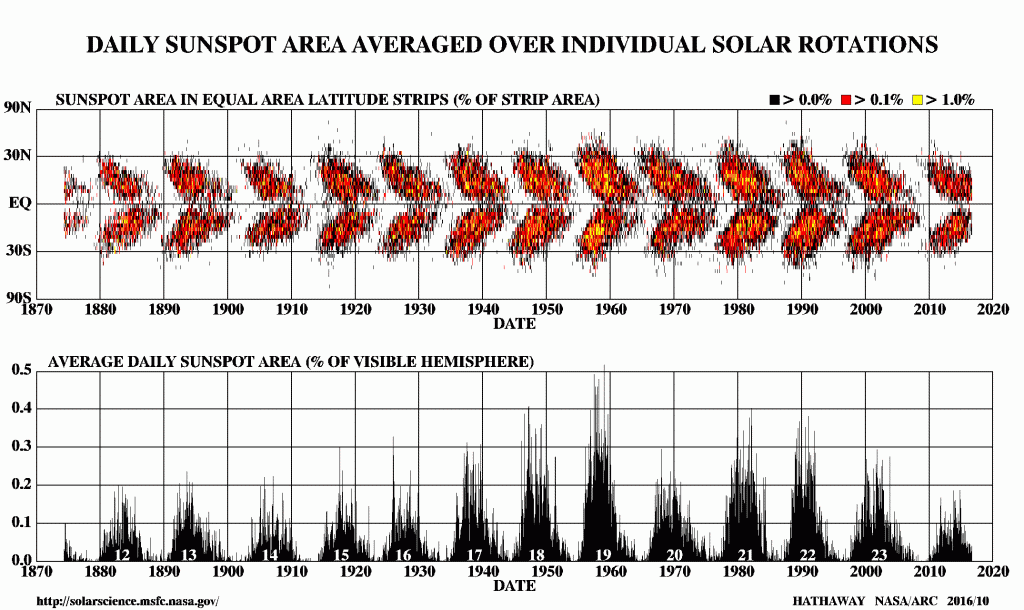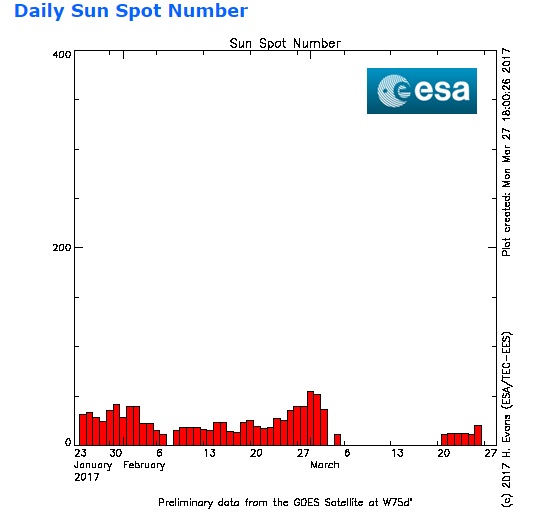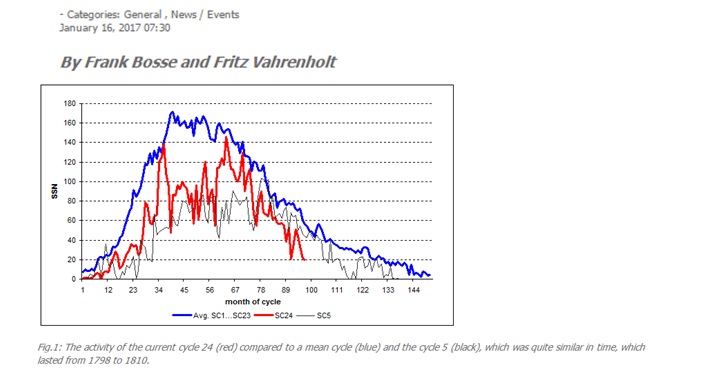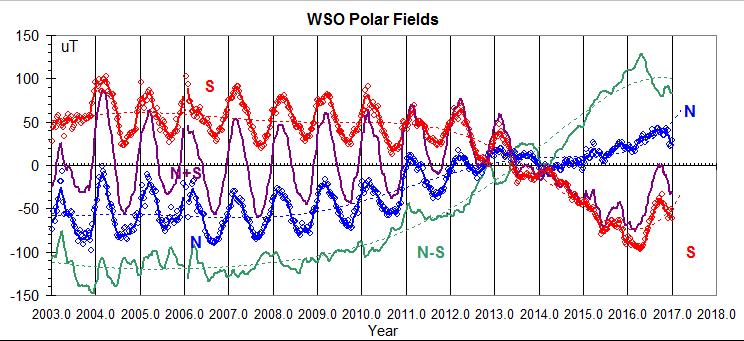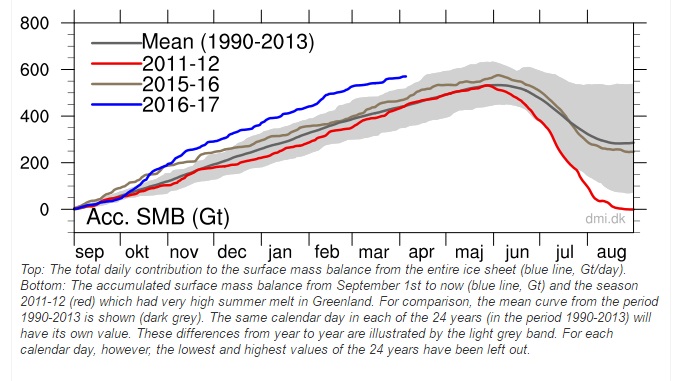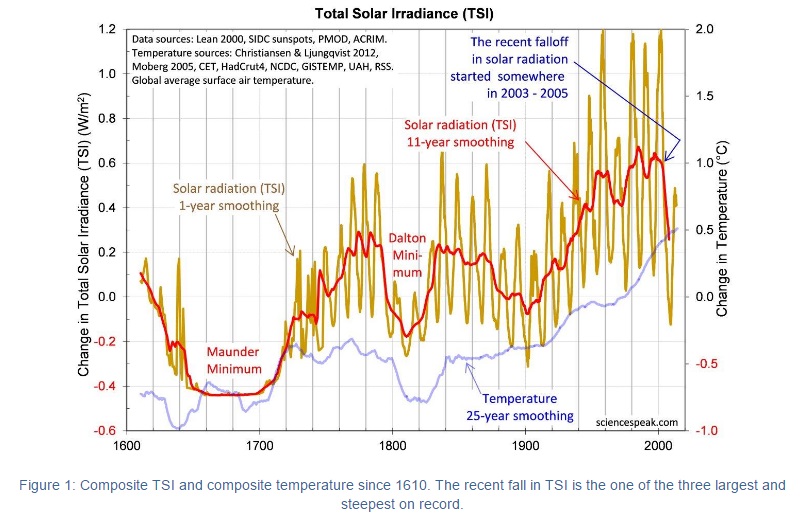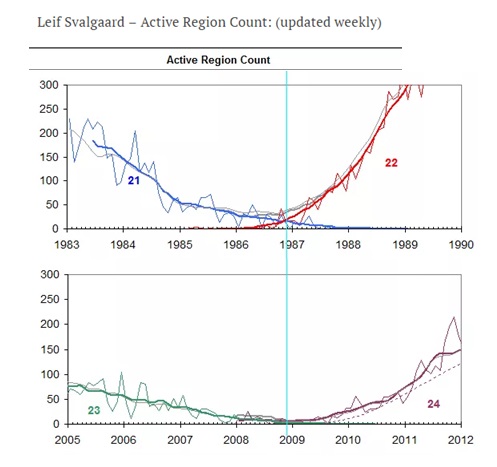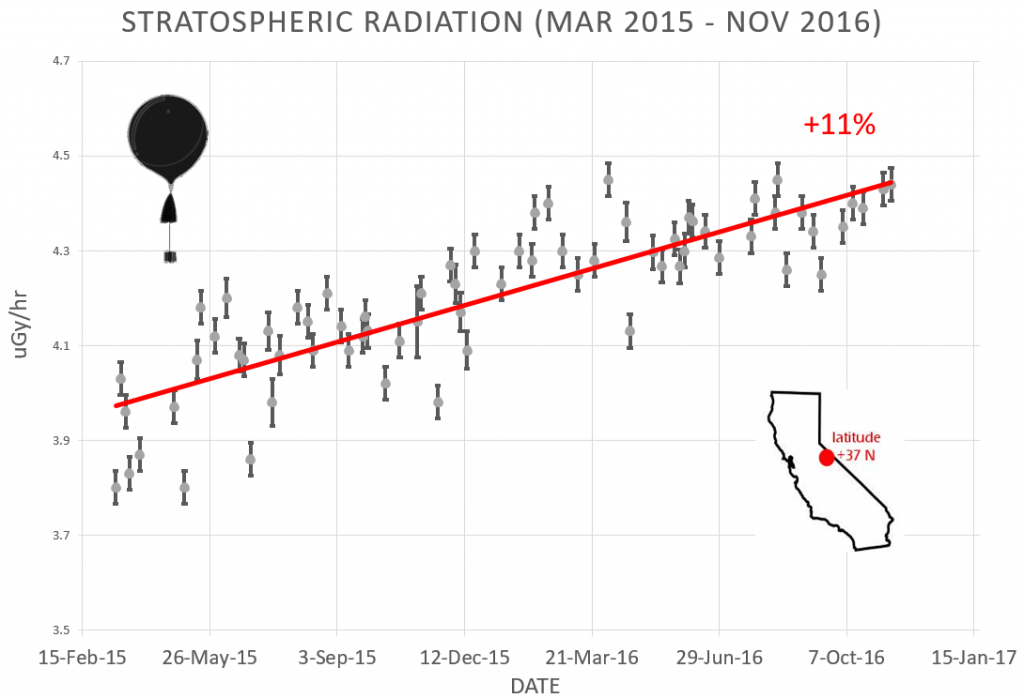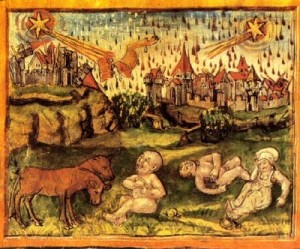 In the world’s oldest temperature record (Central England Yearly Average Temperature 1660–2008) It shows our present temperature surge from 1976–2010, and there is a similar strong temperature surge from AD 1688–1738, before rapid significant cooling which devastated agriculture across Europe two years later.
In the world’s oldest temperature record (Central England Yearly Average Temperature 1660–2008) It shows our present temperature surge from 1976–2010, and there is a similar strong temperature surge from AD 1688–1738, before rapid significant cooling which devastated agriculture across Europe two years later.
With TSI down, sunspots disappearing years ahead of schedule and the Sun effecting Earth's magnetosphere, are we repeating the same pattern to rspid cooling in just a couple of years?
The Great Frost of 1740 Which Devastated Europe, Is it Returning in 2018?
Dennis Avery points out in his assessment of the repeatinig temperature trends that one of his readers saw a pettern similar to todays. In the world’s oldest temperature record—Central England Yearly Average Temperature 1660–2008: The first section showed our present temperature surge from 1976–2010, and there is a similar strong temperature surge from AD 1688–1738, before rapid significant cooling which devastated agriculture across Europe two years later.
The killer in the comparison is that the temperature surge after 1688 was followed by a sudden plunge into one of the coldest periods in the entire Little Ice Age! The cold of 1739-40 was called The Great Frost, and it devastated Europe from Italy to Iceland.
The linkage? The Great Frost followed a period of very few sunspots—the Maunder Minimum (1645–1715). Today, we know that fewer sunspots predict colder temperatures, and the modern world has just undergone a similar dearth of sunspots, from 2007 to 2011.
During the Maunder period, Europe’s glaciers were much larger than today; it was the Little Ice Age, after all. But the glaciers didn’t advance during the sunspot dearth. The winters of the 1730s were actually fairly warm. But during and after the winter of 1739, glaciers advanced strongly through France and Germany, and north into Sweden, Norway and Iceland and didn’t retreat for the next 50 years!
Ireland suffered the most severely. In the depths of the winter of 1739-40, winds and terrible cold intensified. Rivers, lakes, and waterfalls froze and fish died in the first few weeks of the Great Frost. Coal dealers found their coal piles and unloading docks frozen solid. Mill-wheels froze, so the millers and bakers could produce no bread.
Ireland’s crucial potato crop—normally left in the ground until needed for food—froze underground. The tubers were ruined for food, and useless as seed for the following year. The following spring came drought, and the winds remained fierce. The winter wheat and barley sown the previous fall died in the fields. Sheep and cattle died in the pastures. The fall of 1740 saw a small harvest, but the dairy cattle had been so starved that few of them bore calves. Milk production plummeted as the cows’ milk dried up.
That winter, blizzards ranged along the coast, and great chunks of ice sweeping down the River Liffey sank vessels in the harbor. Dublin wheat prices rose to all-time highs.
Meanwhile dysentery, smallpox, and typhus were ravaging a weakened population. Farm workers had seldom gone to town when they had food on their tables; now they wandered in seeking food or relief assistance—and died in great numbers.
The climate disaster finally ended in the summer of 1741. An estimated 400,000 people had died. Desperation gripped the people following both the Great Frost and a warmer bad-weather famine from 1726 to 1730. The harsh variability of the Little Ice Age was being felt full force. Thousands of Irish families began immigrating to America. The emigration of Ulster Presbyterians, for example, peaked between 1740 and 1760. Ministers took whole congregations to the Carolinas and Virginia, where they found like-minded people and cheap farmland.
Usually, there’s about a ten-year lag between sunspot changes and their impact on earth’s temperatures. The sunspots began predicting lower temperatures about 2000, for instance, and the cooling trend began eight years later in 2007. Now the sunspot minimum that just ended is predicting quite serious cold, perhaps about 2020.
Original written article by Dennis Avery Canadian Free Press
Graphics and commentary by David DuByne of ADAPT 2030 Mini Ice Age 2015-2035 Channel

